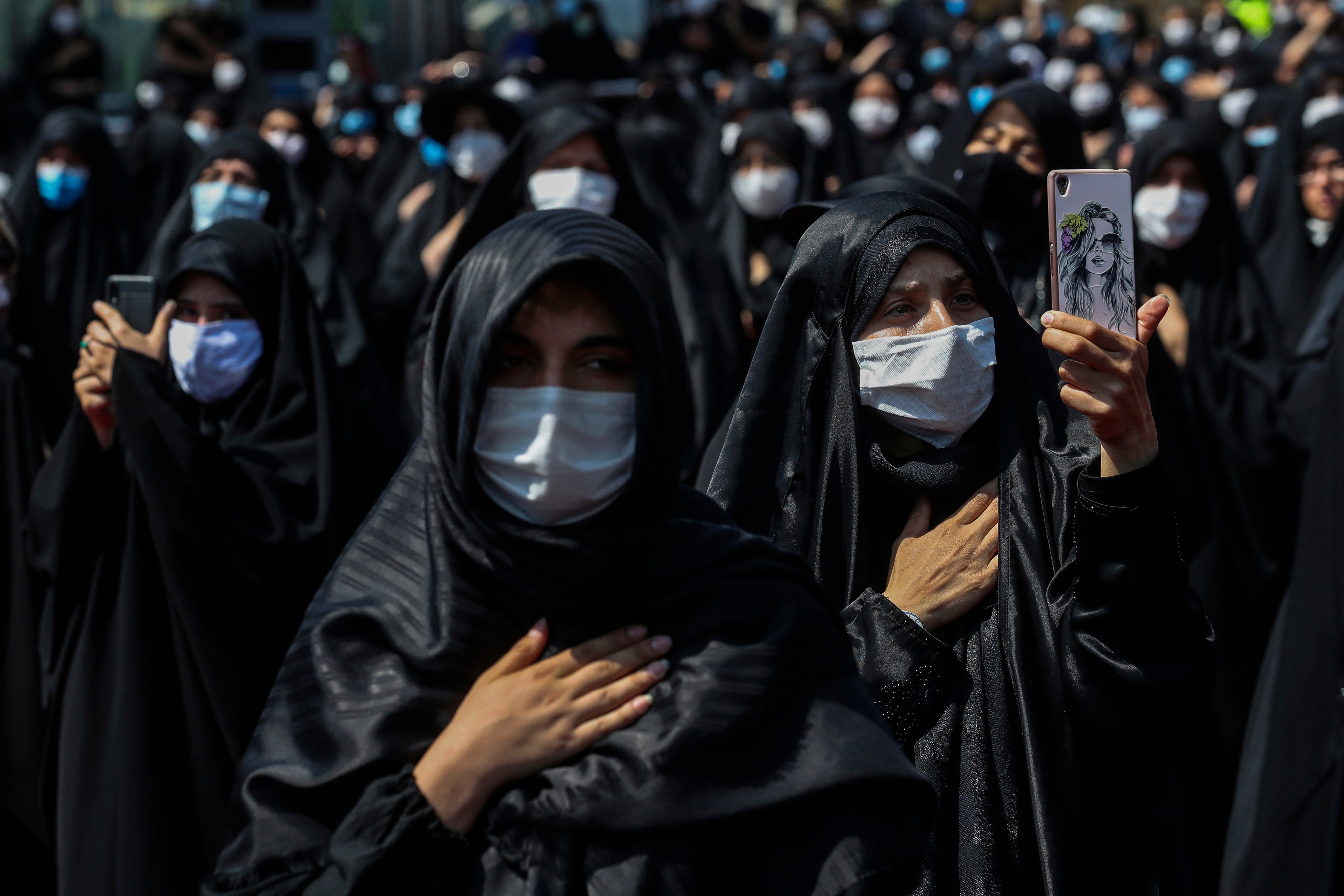A pandemic atlas: No longer in viral denial, Iran struggles
At the start, Iranian officials downplayed COVID-19 — denying the mounting toll of infections, refusing to close mosques, making half-hearted gestures at locking down businesses

Your support helps us to tell the story
From reproductive rights to climate change to Big Tech, The Independent is on the ground when the story is developing. Whether it's investigating the financials of Elon Musk's pro-Trump PAC or producing our latest documentary, 'The A Word', which shines a light on the American women fighting for reproductive rights, we know how important it is to parse out the facts from the messaging.
At such a critical moment in US history, we need reporters on the ground. Your donation allows us to keep sending journalists to speak to both sides of the story.
The Independent is trusted by Americans across the entire political spectrum. And unlike many other quality news outlets, we choose not to lock Americans out of our reporting and analysis with paywalls. We believe quality journalism should be available to everyone, paid for by those who can afford it.
Your support makes all the difference.At the start, Iranian officials downplayed COVID-19 — denying the mounting toll of infections, refusing to close mosques making half-hearted gestures at locking down businesses.
That was then. This is now: Even Supreme Leader Ayatollah Ali Khamenei has worn disposable gloves while planting a tree for state media, and he prayed in an empty mosque to mark the holy Shiite commemoration of Ashoura.
The coronavirus pandemic has only grown worse in Iran in the course of the year, threatening everyone from the day laborer on the street to the upper reaches of the Islamic Republic. Now the virus has sickened and killed top officials, becoming perhaps Iran’s greatest threat since the turmoil and war that followed its 1979 Islamic Revolution.
Crushed by U.S. sanctions, Iran has avoided the full lockdowns seen in other countries as it struggles to keep its anemic economy alive. Those who must work each day to eat — whether from the sweat of construction or driving a taxi through Tehran’s clogged streets — do not have the luxury of being able to stay at home.
Even efforts aimed at limiting some travel have been met with chaos, with online videos repeatedly showing drivers ignoring police to speed off to the Caspian Sea for long weekends. Efforts to close shrines saw hard-liners push their way into two in March.
And the toll just keeps rising, say the officials at Tehran’s massive Behesht-e-Zahra cemetery, already the final resting place of some 1.6 million people.
“All of the crises that we have experienced at this cemetery over the past 50 years of its history have lasted for just a few days or a week at most,” manager Saeed Khaal said. Never before — not during earthquakes or even the country’s 1980s war with Iraq — has the pace of bodies flowing into Behesht-e-Zahra been so high for so long, he said.
The spread of the virus in February came as Iran held a parliamentary election in which officials sought to boost turnout as a sign of support in the government. The country also marked the 41st anniversary of its 1979 Islamic Revolution with robust demonstrations. Those mass events likely fueled the virus’ spread.
Iran has asked the International Monetary Fund for $5 billion, potentially its first-such loan since 1962, though that has not yet been granted amid the U.S. pressure campaign that began after President Donald Trump unilaterally withdrew from Iran’s nuclear deal with world powers. Those sanctions, while allowing for humanitarian aid, have crushed Iran’s rial currency and made international purchases of medicine and equipment much more difficult.
Meanwhile, Iran's own response has been hampered in part by mixed messages as the crisis worsened in the fall. The country requested aid from the international community, then revoked an offer allowing Doctors Without Borders to work in Isfahan. Khamenei also refused U.S. aid, citing a baseless conspiracy theory claiming the virus could be man-made by America.
In October, Health Minister Saeed Namaki warned of “hospitals full of patients,” but then the next day reportedly said: “We should never announce that we don’t have empty beds. We do have empty beds.” Authorities ordered face masks to be worn, then set the cash fine at just 500,000 rials, or $1.60. All as Iran hit ever-increasing records for its reported daily deaths and case counts — numbers long suspected of being below the true toll of the pandemic.
By mid-December, Iran had reported over 1,300 cases per 100,000 population.
What awaits Iran in winter remains in question.
Nearly half of the country's recorded coronavirus deaths have come from Tehran. Authorities in November proposed a monthlong nightly business curfew in the capital and 30 other major cities and towns, asking nonessential shops to keep their workers home.
But whether that will have an effect remains in question. The streets were far from empty, and there was no noticeable police presence to enforce the curfew.